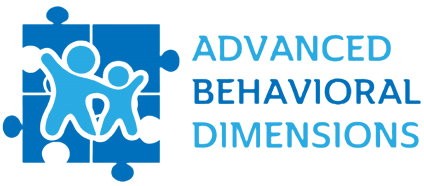Table of Contents
| Understanding ABA Therapy |
| The Role of ABA in Educational Settings |
| Key Strategies Used by ABA Therapists |
| Benefits for Students with Different Needs |
| Implementing ABA in Classroom Environments |
| Positive Behavior Reinforcement Techniques |
| Addressing Challenging Classroom Behaviors |
| Collaboration Between Teachers and ABA Therapists |
| Measuring Success in School Settings |
| Long-Term Impact of ABA Therapy |
Introduction
Imagine a classroom where every student is engaged, respectful, and eager to learn. Sounds like an educational utopia, right? This is precisely where ABA Therapy in Schools becomes a game-changer. Applied Behavior Analysis (ABA) therapy has revolutionized how we approach learning and behavior in educational settings, offering a beacon of hope for students, teachers, and parents alike.
Understanding ABA Therapy
What is ABA Therapy?
ABA therapy is like a GPS for behavioral navigation. Just as a GPS helps you find the most efficient route, ABA therapy helps students find the most effective ways to learn, communicate, and interact positively. It’s a scientific approach that focuses on understanding and improving specific behaviors.
The Role of ABA in Educational Settings
Breaking Down Classroom Barriers
ABA therapy in schools acts as a bridge between students’ unique learning needs and the classroom environment. It provides targeted strategies to:
- Improve communication skills
- Reduce disruptive behaviors
- Enhance learning capabilities
- Support individual student growth
Key Strategies Used by ABA Therapists
Precision in Behavioral Intervention
ABA therapists employ a toolkit of evidence-based strategies:
- Positive Reinforcement: Rewarding desired behaviors
- Discrete Trial Training: Breaking complex skills into manageable steps
- Functional Behavior Assessment: Understanding the root causes of specific behaviors
Benefits for Students with Different Needs
Inclusive Learning for Everyone
Whether a student has autism, ADHD, or other learning challenges, ABA therapy offers personalized support. It’s like having a custom-tailored learning experience that adapts to each student’s unique needs.
Implementing ABA in Classroom Environments
Creating a Supportive Learning Space
Successful implementation involves:
- Clear communication protocols
- Consistent behavioral expectations
- Individualized learning plans
- Collaborative approach between therapists and educators
Positive Behavior Reinforcement Techniques
Turning Challenges into Opportunities
Think of behavior reinforcement like watering a plant. Each positive interaction nurtures growth, helping students develop essential life skills and self-regulation.
Addressing Challenging Classroom Behaviors
Transforming Disruptions into Learning Moments
ABA therapy provides structured approaches to:
- Identify trigger points
- Develop coping mechanisms
- Teach alternative communication strategies
Collaboration Between Teachers and ABA Therapists
A Team Approach to Student Success
Effective ABA implementation requires seamless communication and shared goals between educational professionals, creating a holistic support system for students.
Measuring Success in School Settings
Tracking Progress and Celebrating Achievements
Success is measured through:
- Behavioral improvement metrics
- Academic performance tracking
- Social skill development assessments
Long-Term Impact of ABA Therapy
Beyond the Classroom Walls
The skills learned through ABA therapy extend far beyond academic settings, preparing students for future social and professional interactions.
Conclusion
ABA therapy in schools is more than just a behavioral intervention—it’s a transformative approach that empowers students, supports educators, and creates inclusive learning environments.
Frequently Asked Questions
- What age groups can benefit from ABA therapy in schools? ABA therapy can be effective for students from early childhood through high school, with strategies tailored to specific developmental stages.
- Is ABA therapy only for students with special needs? While particularly beneficial for students with autism or behavioral challenges, ABA strategies can support learning for all students.
- How long does ABA therapy typically take to show results? Results vary, but many schools observe positive changes within weeks to months of consistent implementation.
- Are there any potential drawbacks to ABA therapy? When implemented correctly, ABA therapy has minimal drawbacks. However, personalized approaches and professional guidance are crucial.
Can parents be involved in ABA therapy strategies? Absolutely! Parental involvement and consistency between home and school environments significantly enhance therapy effectiveness.




